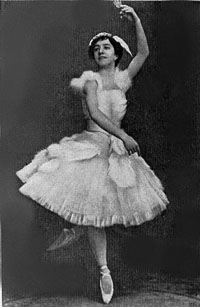Agrippina Vaganova (1879-1951) was the daughter of an usher at the Maryinsky. She graduated from the Imperial Ballet School in 1897. In the creative life of Agrippina Vaganova, two periods can be distinguished. The first of these, her stage career as a dancer, she usually recalls with bitterness. The second, her activity as an instructor, brought her worldwide recognition.
A brilliant dancer at the Maryinsky Theater, Vaganova had become famous as the "queen of variations" in ballets in which the leading roles were performed by Pavlova and Karsavina; her lack of beauty meant that she did not receive the title of ballerina until 1915, the year before her retirement.
She is most remembered as a great teacher of generations of dancers, taking the best of the old imperial style - a Romantic plasticity allied with Italian bravura - and blending it with a more athletic movement to form what became known as the Vaganova system. This method did not isolate one particular part of the body, but trained it into one harmonious whole. Vaganova considered a great number of repetitions of movements helpful and necessary for beginners in order to develop the elasticity of the ligaments. In her advanced classes she created infinite variations of her lessons. Her pupils not only mastered a step, but they were also able to explain how to perform it correctly and what its purpose was. Making them write down the separate combinations, suggesting that they find the reasons for the unsuccessful execution of a step, Vaganova developed their understanding of the correct coordination of movements.
Vaganova sought from her pupils emotional expressiveness, strictness of form and a resolute, energetic manner of performance. The dancing of Vaganova's pupils corresponded to the very essence of Soviet ballet as an art of great meaning, lofty lyricism and heroic spirit.
 Agrippina Vaganova, "Queen of Variations"
Agrippina Vaganova, "Queen of Variations"

